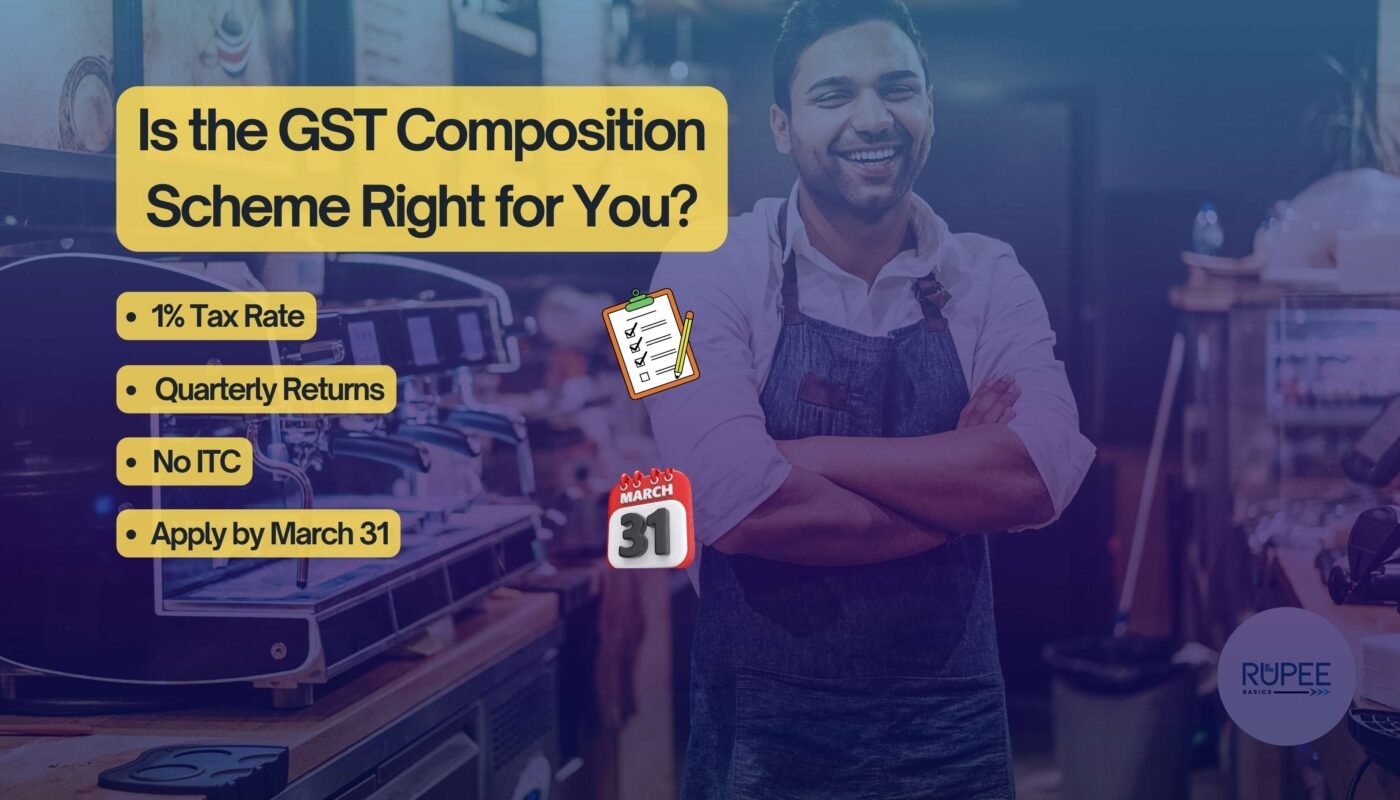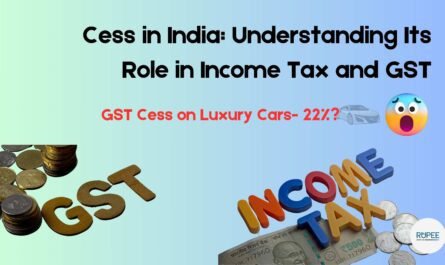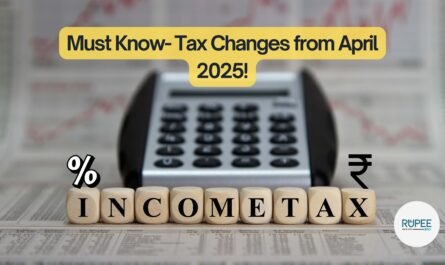Simplifying GST Compliance: A Comprehensive Guide to the GST Composition Scheme
Struggling with GST compliance? The GST Composition Scheme is a lifeline for small businesses, offering lower taxes, fewer filings, and simplified rules. But is it right for you? Let’s break it down step-by-step.
Navigating the complexities of Goods and Services Tax (GST) can be challenging for small businesses. To resolve this, the Indian government introduced the GST Composition Scheme, a simplified tax regime designed to ease compliance and reduce the tax burden for eligible taxpayers. This guide delves into the intricacies of the scheme, including eligibility criteria, application process, deadlines, benefits, drawbacks, and practical examples to aid your understanding.
What is the GST Composition Scheme?
The GST Composition Scheme is an alternative taxation framework aimed at small taxpayers. It allows eligible businesses to pay GST at a fixed rate of their turnover, simplifying tax compliance by reducing the number of returns and record-keeping requirements. This scheme is particularly beneficial for small enterprises seeking relief from the complexities of regular GST procedures.
The GST Composition Scheme is a simplified tax system for small businesses with an annual turnover below ₹1.5 crore (₹75 lakh for North-Eastern states). Instead of paying GST at standard rates (5%–28%), you pay a fixed percentage of your turnover, reducing paperwork and compliance hassles.
Eligibility Criteria for the Composition Scheme
To opt for the Composition Scheme, businesses must meet specific criteria:
- Turnover Threshold:
- Manufacturers and Traders: Annual aggregate turnover up to ₹1.5 crore.
- Special Category States: For certain northeastern and hilly states, the threshold is ₹75 lakh.
- Service Providers: Annual turnover up to ₹50 lakh.
- Business Type:
- Manufacturers (excluding those producing ice cream, pan masala, or tobacco).
- Traders.
- Restaurants not serving alcohol.
- Certain service providers as notified by the government.
- Exclusions:
- Businesses engaged in inter-state supplies.
- Suppliers of non-GST goods.
- Those involved in e-commerce requiring tax collection at source.
- Casual taxable persons and non-resident taxable persons.
Tax Rates Under the Composition Scheme
The scheme offers reduced tax rates based on the nature of the business:
- Manufacturers and Traders: 1% of turnover.
- Restaurants (not serving alcohol): 5% of turnover.
- Other Service Providers: 6% of turnover.
These rates are significantly lower than standard GST rates, providing substantial relief to small businesses.
How to Apply for the Composition Scheme
Eligible taxpayers can opt into the Composition Scheme by following these steps:
- Log in to the GST Portal: Access your account at www.gst.gov.in.
- Navigate to Services: Go to ‘Services’ > ‘Registration’ > ‘Application to Opt for Composition Levy’.
- Submit Form CMP-02: Fill out and submit the form to opt into the scheme.
- Verification: Complete the verification process through electronic verification code (EVC) or digital signature certificate (DSC).
Deadline: For the financial year 2025-26, the application must be submitted by March 31, 2025. Late applications will not be considered for that financial year.
Compliance Requirements for Composition Dealers
Businesses registered under the Composition Scheme must adhere to specific compliance mandates:
- Quarterly Payment: Pay tax quarterly using Form CMP-08 by the 18th of the month following the quarter.
- Annual Return: File an annual return using Form GSTR-4 by April 30 of the following financial year.
- Invoice Issuance: Issue a bill of supply instead of a tax invoice, as composition dealers cannot charge GST to customers.
- Display of Registration Status: Prominently display the words ‘Composition Taxable Person’ on business premises and bills of supply.
Advantages of the Composition Scheme
Opting for the Composition Scheme offers several benefits:
- Simplified Compliance: Reduced number of returns and minimal record-keeping. File quarterly returns (CMP-08) instead of monthly. Annual return (GSTR-4) due by April 30.
- Lower Tax Liability: Fixed, lower tax rates enhance liquidity.
- Cost Efficiency: Decreased administrative and compliance costs.
- Better Cash Flow: Pay taxes from your pocket at a fixed rate, freeing up working capital.
Disadvantages of the Composition Scheme
However, there are limitations to consider:
- No Input Tax Credit (ITC): Inability to claim ITC on purchases increases procurement costs.
- Restricted Business Operations: Prohibited from inter-state sales and e-commerce participation.
- Turnover Limitations: Exceeding the turnover threshold necessitates a shift to the regular GST scheme with higher compliance requirements.
Practical Example
Consider ABC Electronics, a manufacturer with an annual turnover of ₹1.2 crore. Under the Composition Scheme:
- Tax Rate: 1% of turnover.
- Quarterly Tax Payment: ₹30,000 (1% of ₹1.2 crore divided by 4).
- Compliance: Quarterly filing of CMP-08 and annual filing of GSTR-4.
This setup simplifies ABC Electronics’ tax process, reduces liability, and allows focus on business growth.
Another Example:
Composition Scheme vs. Regular GST
Let’s say ABC Traders has a ₹1.2 crore turnover:
- Under Composition Scheme: Pays 1% tax (₹12,000) but no ITC.
- Under Regular GST: Charges 12% GST (₹14.4 lakh) but claims ₹4 lakh ITC, paying ₹10.4 lakh net 9.
Verdict: Composition saves taxes if your purchase costs are low. Otherwise, regular GST is better for ITC benefits.
Conclusion
The GST Composition Scheme is a strategic initiative to support small businesses by simplifying tax compliance and reducing liabilities. While it offers notable advantages, it’s crucial for businesses to assess their operations, growth projections, and eligibility criteria before opting in. Understanding both the benefits and limitations ensures informed decision-making aligned with business objectives.
Is the Scheme Right for You?
The GST Composition Scheme is ideal for local small businesses with limited turnover and minimal input purchases. While it offers lower taxes and easier compliance, weigh the loss of ITC and geographic restrictions carefully.
Act Now: The deadline to apply for FY 2025-26 is March 31, 2025!
Frequently Asked Questions (FAQs)
1. Can a business switch from the Composition Scheme to the regular GST scheme?
Yes, businesses can transition between schemes by filing the appropriate forms on the GST portal.
2. Are composition dealers required to maintain detailed records?
While record-keeping requirements are simplified, maintaining basic records of transactions is mandatory.
3. Can composition dealers supply goods through e-commerce platforms?
No, businesses under the Composition Scheme cannot supply goods through e-commerce operators that collect tax at source.
4. Is the Composition Scheme applicable to service providers?
Yes, certain service providers with an annual turnover up to ₹50 lakh are eligible under specific conditions.
5. What happens if a composition dealer exceeds the turnover threshold during the year?
They must switch to the regular GST scheme and comply with its provisions from the day they exceed the threshold.
“Consistency compounds. Small daily improvements create massive long-term success.” – James Clear



